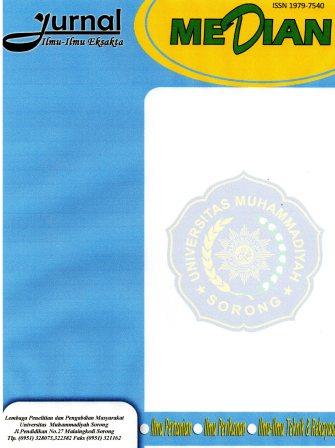Strategi Pengembangan Pusat Edukasi Gajah Sumatera (Elephas maximus spp. sumatranus) Aek Nauli Bagi Pengembangan Wilayah Kabupaten Simalungun
DOI:
https://doi.org/10.33506/md.v17i2.4547Keywords:
Existing conditions, Development strategy, Sumatera elephant education center.Abstract
Research entitled "Development Strategy of Sumatera Elephant Education Center (Elephas Maximus Sumatranus) Tourism Object Aek Nauli for the Development of Simalungun Regency" has been conducted with the aim of knowing the existing condition of the Sumatera elephant education center Aek Nauli tourism object and to analyze the existing condition and determine the development strategy of the Sumateran elephant education center tourism object related to the development of Simalungun Regency. The research method was carried out using the opinion method of 48 respondents of visitors and managers of the Sumatera elephant education center tourism object. The existing condition of the management of the Sumatera elephant education center tourist attraction has strong internal strengths in terms of strategic location, unique tourism, elephant health that is always prime and a very neat tourism experience, has low weak internal weaknesses especially in terms of the absence of a legal basis for the application of entrance fees that are expected to support management, has high external opportunities in terms of broader and permanent cooperation between parties, the possibility of developing tourist attractions with existing natural potential that has not been managed and becoming an educational medium to increase public awareness to maintain the sustainability of animals and the environment, and has low external threats in the form of the influence of the presence of toll roads, disturbances from the surrounding community and unfriendly attitudes, all of which can be overcome easily by socialitation. Referring to the existing condition of the Sumatera elephant education center tourist attraction, the coordinates are at point (0,82 ; 0,83) in quadrant I, the S-O (Strength-Opportunity) strategy will be implemented based on the strengths of the management to improve weaknesses by utilizing opportunities as optimally as possible to anticipate existing threats where the current management condition of the Sumatera elephant education center tourist attraction has strengths and development opportunities with the hope of maximizing the strengths and utilizing existing opportunities. So, the strategy that must be implemented in future development is to support an aggressive growth policy (growth-oriented strategy).
References
Irwin.
BBKSDASU, 2024. Laporan Pertanggung Jawaban Program Konservasi Keanekaragaman Hayati Taman Wisata Alam (Twa) Dolok Tinggi Raja Dan Gajah Sumatera Di Aek Nauli Elephant Conservation Camp (ANECC).
Cole, S. (2006). Cultural tourism, community participation and empowerment. In M. Smith & M. Robinson (Eds.), Cultural Tourism in a Changing World: Politics, Participation and (Re)presentation (pp. 89–103). Channel View Publications.
Day & Prakash Nedungadi. (1994), Managerial Representations of Competitive Advantage, Journal of Marketing, 58, 31-44.
Dillman, D. A., Smyth, J. D., & Christian, L. M. (2014). Internet, Phone, Mail, and Mixed-Mode Surveys: The Tailored Design Method (4th ed.). John Wiley & Sons.
Direktorat Jenderal Konservasi Sumber Daya Alam dan Ekosistem, 2024. Perjanjian Kinerja Direktorat PJLHK Tahun 2018.Fennell, D. A. (2008). Ecotourism (3rd ed.).
Greeners. (2015). Gajah Sumatera, Mamalia Darat Raksasa yang Terancam Punah. Diakses dari https://www.greeners.co/flora-fauna/gajah-sumatera-mamalia-darat-raksasa-yang-terancam-punah/Greeners.Co+11001 Indonesia+1
Gürel, E., & Tat, M. (2017). SWOT Analysis: A Theoretical Review. The Journal of International Social Research, 10(51), 994–1006. https://doi.org/10.17719/jisr.2017.1832
Inskeep, E. (1991). Tourism Planning: An Integrated and Sustainable Development Approach.
Neuman, W. L. (2014). Social Research Methods: Qualitative and Quantitative Approaches (7th ed.). Pearson Education.
Panagiotou, G. (2003). Bringing SWOT into focus. Business Strategy Review, 14(2), 8–10. https://doi.org/10.1111/1467-8616.00253.
Pickton, D. W., & Wright, S. (1998). What's SWOT in strategic analysis? Strategic Change, 7(2), 101–109. https://doi.org/10.1002/(SICI)1099-1697(199803/04)7:2<101::AID JSC332>3.0.CO;2-6.
Richards, G. (2001). Cultural Attractions and European Tourism. CABI Publishing Routledge.Honey, M. (2008). Ecotourism and Sustainable Development: Who Owns Paradise? (2nd ed.). Island Press.
Scheyvens, R. (1999). Ecotourism and the empowerment of local communities. Tourism Management, 20(2), 245–249. https://doi.org/10.1016/S0261-5177(98)00069-7
Suwantoro, G. (2004). Dasar-dasar Pariwisata. Yogyakarta: Andi.
Smith, M. K. (2009). Issues in Cultural Tourism Studies (2nd ed.). Routledge.
UNWTO. (2012). Global Report on City Tourism. World Tourism Organization
Van Nostrand Reinhold.Timothy, D. J., & Boyd, S. W. (2003). Heritage Tourism. Pearson Education.
Weaver, D. B. (2001). Ecotourism. John Wiley & Sons Australia, Ltd.
Downloads
Published
How to Cite
Issue
Section
License

This work is licensed under a Creative Commons Attribution-ShareAlike 4.0 International License.
Authors who publish with this journal agree to the following terms:
Authors retain copyright and grant the journal right of first publication with the work simultaneously licensed under a Creative Commons Attribution-ShareAlike (CC BY-SA)Â that allows others to share the work with an acknowledgement of the work's authorship and initial publication in this journal.
Authors are able to enter into separate, additional contractual arrangements for the non-exclusive distribution of the journal's published version of the work (e.g., post it to an institutional repository or publish it in a book), with an acknowledgement of its initial publication in this journal.
Authors are permitted and encouraged to post their work online (e.g., in institutional repositories or on their website) prior to and during the submission process, as it can lead to productive exchanges, as well as earlier and greater citation of published work.





